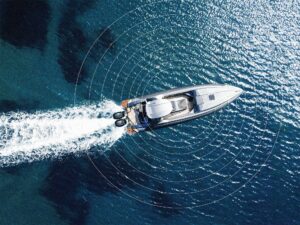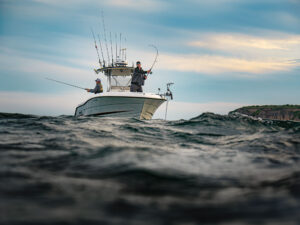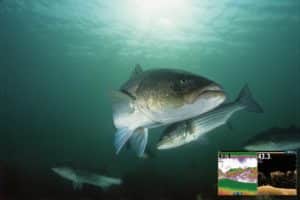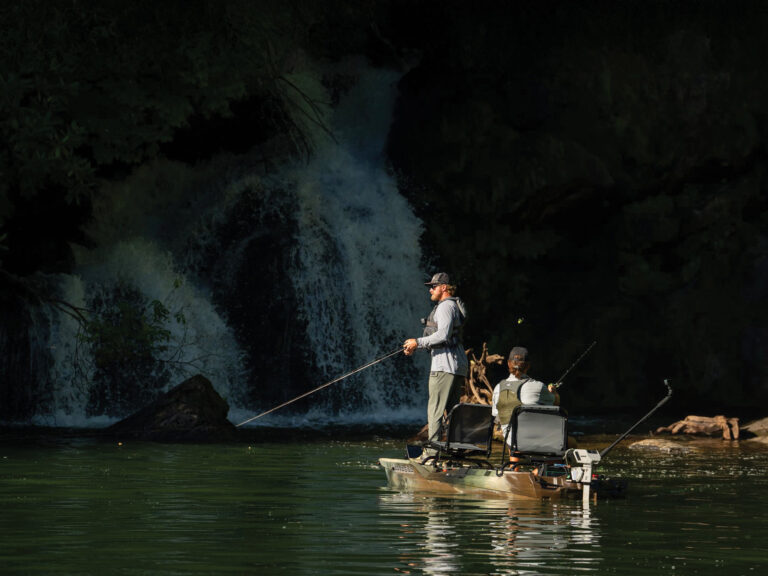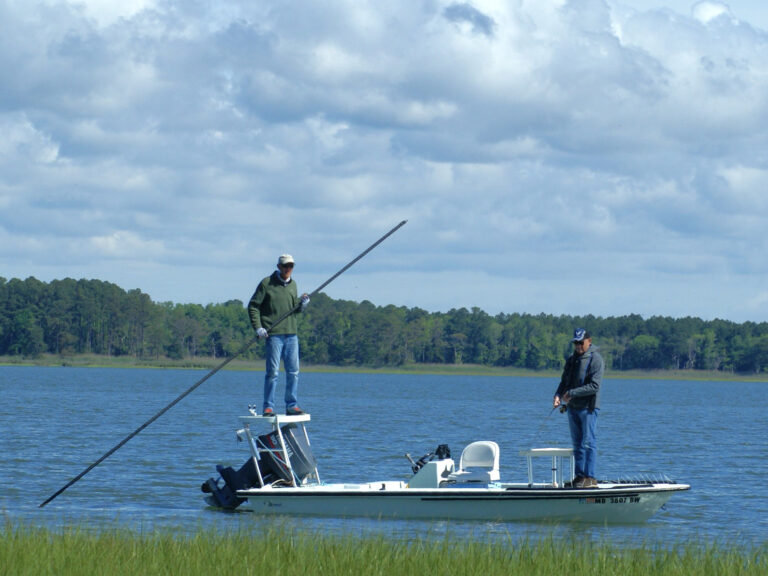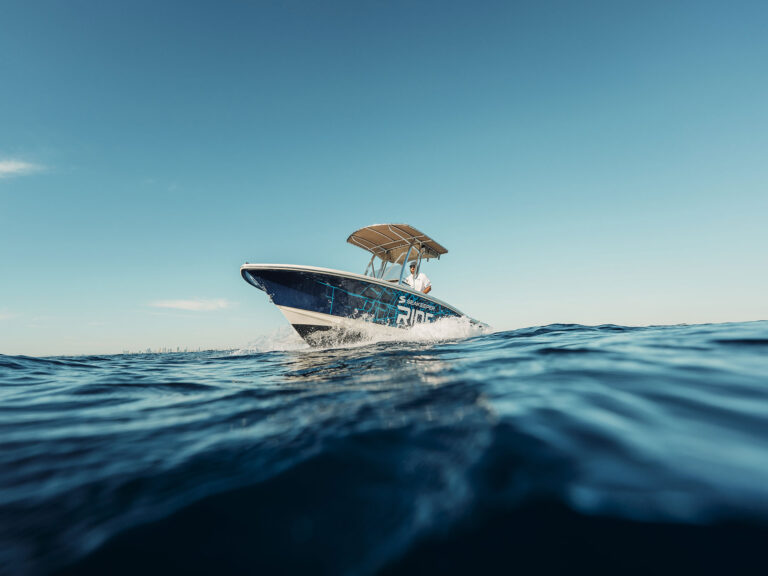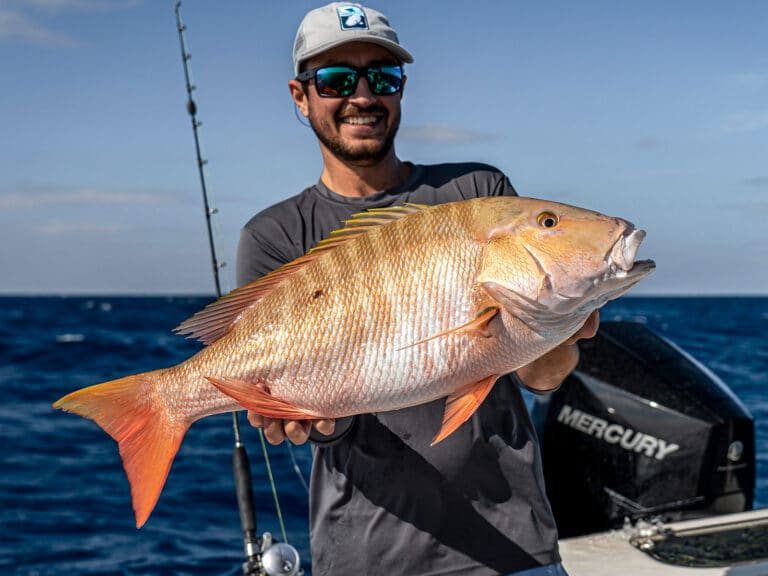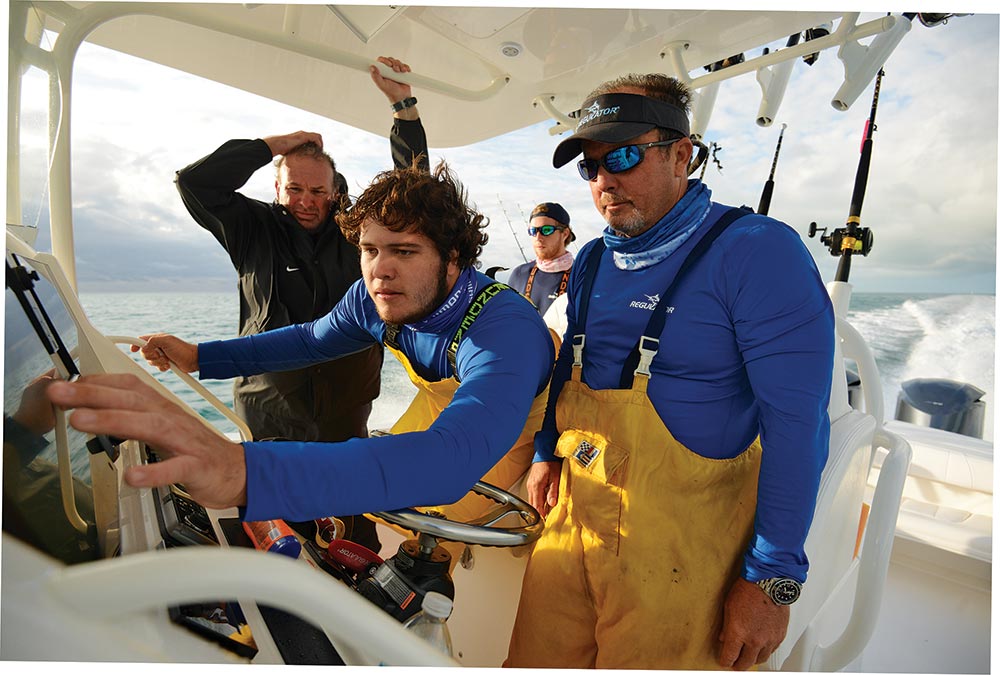
Dialing In
Whether you fish offshore or nearshore, fish high-dollar tournaments or just with friends, you must have a fish finder. It’s simply the most relevant piece of electronics aboard any angler’s boat. And if you’ve bought a fish finder in the past five years, chances are pretty good you have CHIRP capability.
CHIRP (compressed high-intensity radar — or radiated — pulse, depending on who you ask) has come to reside in many fish finders throughout various price ranges. The technology translates most importantly into higher-resolution views of what’s beneath the boat, meaning CHIRP helps you see and distinguish targets such as fish and bait better.
But learning which CHIRP frequencies work best and how you should optimally display them, based on your kind of fishing, will help you get the most for your money.
Low, Medium and High Chirp Frequency Ranges
Dual-channel CHIRP systems — such as Raymarine’s CP450C, Garmin’s GSD 26, Simrad’s BSM-3, Furuno’s DFF1-UHD and Humminbird’s SM3000 — really shine when anglers need to see great detail at depth. Those units pair with transducers that transmit frequency combinations (hence the dual-channel designation) such as low and high (LH), low and medium (LM), or medium and high (MH).
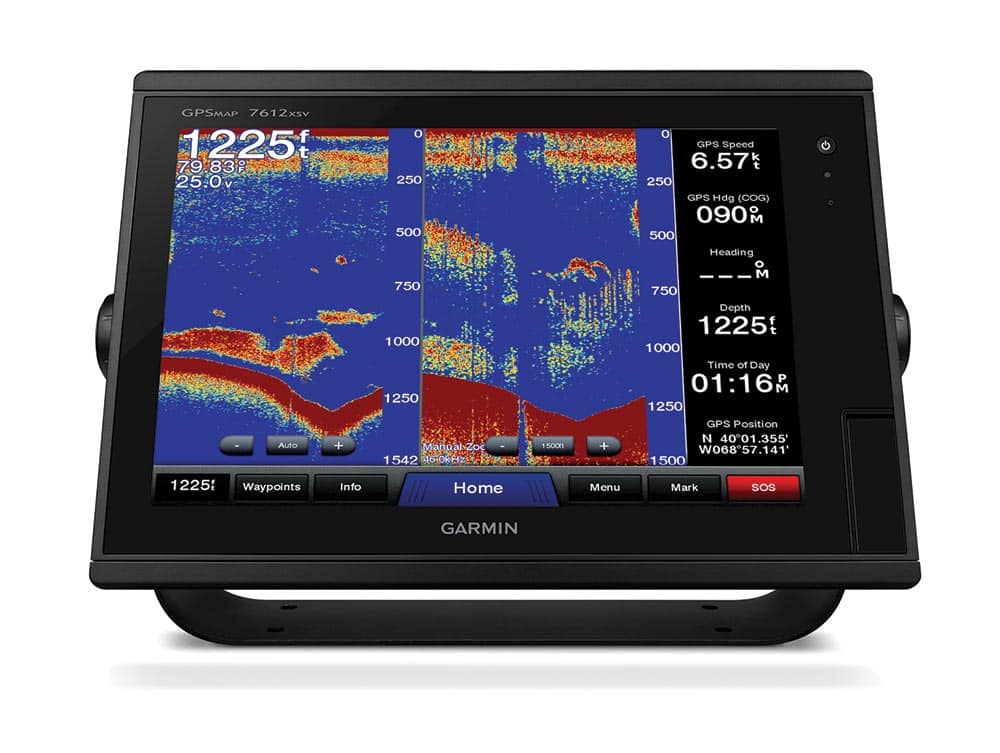
Frequency ranges vary depending on the exact transducer, but they more or less fall within these figures:
- Low — 28 kHz to 75 kHz
- Medium — 80 kHz to 135 kHz
- High — 130 kHz to 210 kHz
Low-frequency CHIRP signals offer deeper readings (some transducers are rated to 10,000 feet). “On the low end, you’re getting a long pulse, so you start to sacrifice detail,” says Raymarine marketing manager Jim McGowan. “The higher we go, the more clarity and sharpness, but we sacrifice depth.”
Low-frequency cone angles are wider than high-frequency cone angles as well, so the higher the frequency, the less area you see beneath the boat. (Think about a wide-beam flashlight compared with a tight-beam flashlight.)
Commercial-fishing captains invest in sounders and transducers that can actually chirp all three frequency ranges — low, medium and high. But recreational anglers generally don’t need that range nor will their boats accommodate the giant transducers necessary. However, anglers can add a separate dedicated transducer that chirps in any one of those frequencies individually as long as they add a second sonar processor.
Using Chirp While Offshore Trolling and Swordfishing
“For billfishing in the Dominican Republic, we’re using CHIRP and marking marlin,” says Capt. Quinton Dieterle, whose Get Lit Fishing Team out of South Florida routinely wins billfish events. “I’ll set one display on medium and one on low, and work it from there.”
Dieterle uses a Raymarine CP450C and Airmar’s R509LM (low/medium) transducer. When he’s fishing deeper than 2,000 feet, he first turns up the gain to find the thermocline — commonly in 200 to 300 feet of water. Then he’ll set up a split screen and dial in the range on one side to show 0 to the thermocline depth. “The fish like to sit above the thermocline. I set up the screen so the thermocline shows at the bottom.”
Matthew Laster, sonar technology product manager for Lowrance and Simrad brands, says anglers would also do well with a low-and-high-frequency transducer and the Simrad BSM-3, particularly if they need to look for bait schools closer to the surface in addition to scouring the depths.
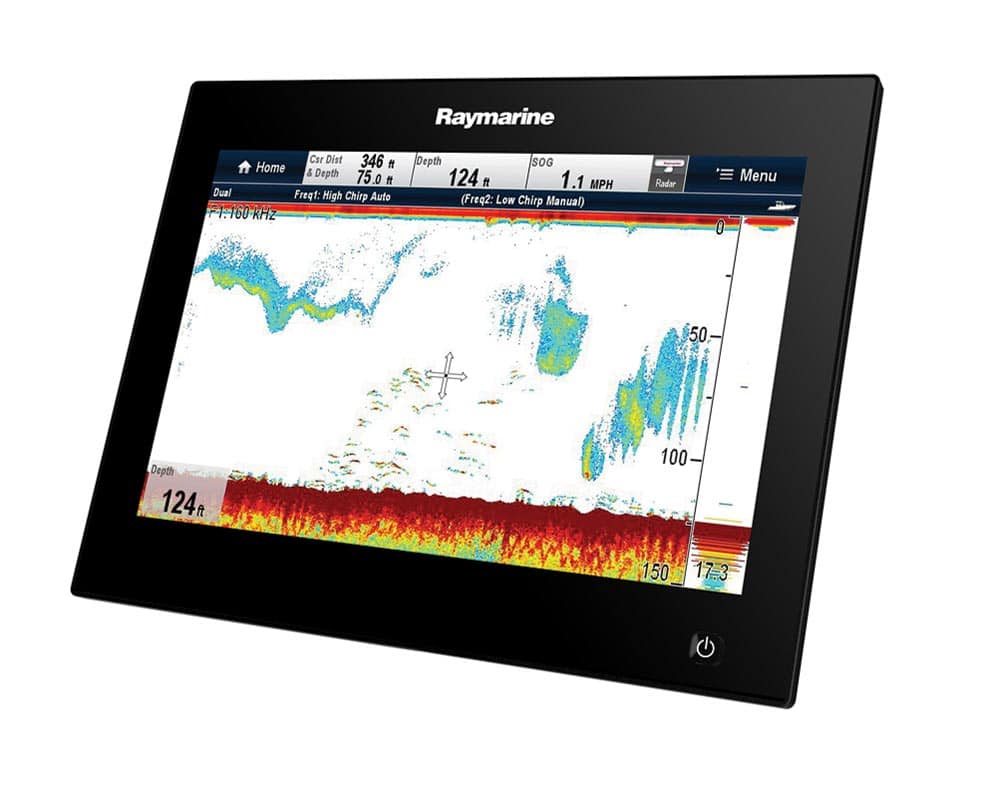
“I’d set the display to show the low range and advance the scroll speed,” Laster says. “In deeper water, it takes longer for the ping to get down and come back up, and the deeper you go, the slower the image scrolls.”
Then the angler could either use a split zoom — showing the bottom 500 feet in a panel beside the full-screen view, using low CHIRP — or he could split the screen and display low CHIRP on one side and high on the other, to keep a lookout in shallower water for tuna and bait.
Dialing In Your Sonar Unit
Sonar units that can display two CHIRP channels can also be set to show a specific frequency within those channels. For instance, experienced fishermen seem to know that 88 and 107 kHz frequencies best display tuna (a fish that does not have a swim bladder), says Jennifer Matsis, Airmar vice president of sales and marketing.
Tuna fishermen can then use their CHIRP unit to dial one transducer element into 88 or 107 and show that on one side of the screen (or on one display), and show a second CHIRP band or individual frequency on the other. “Another advantage to dialing in a frequency is to differentiate from other vessels in the area,” Matsis says. “You can tune out the interference.”
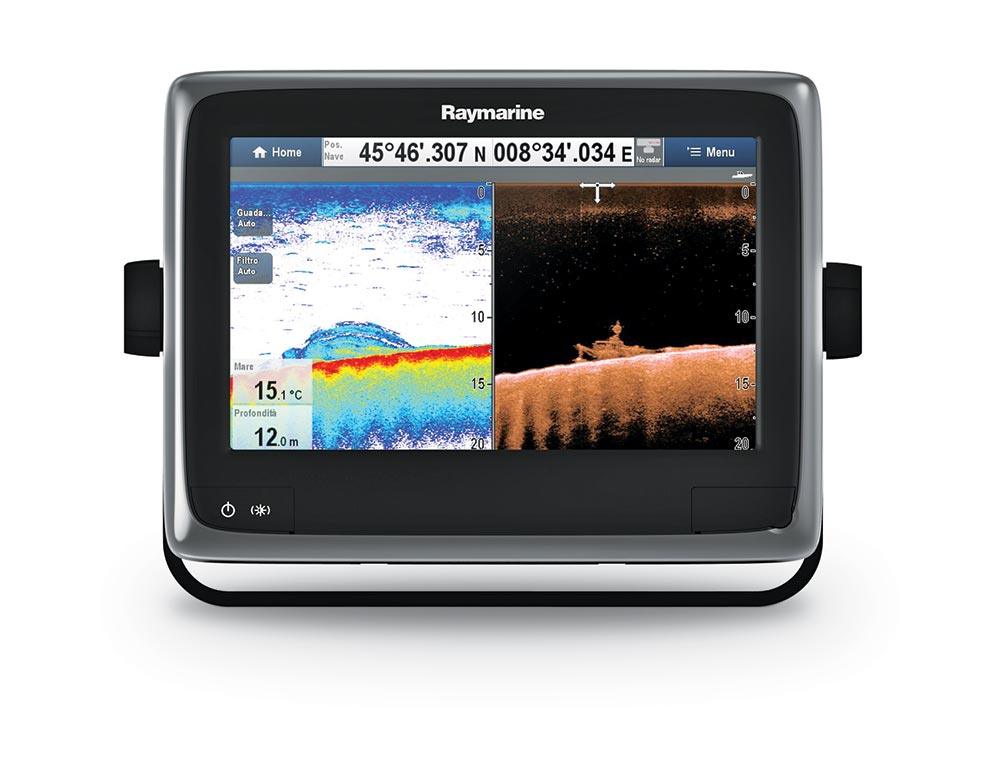
Matsis also says Airmar’s relatively new wide-beam CHIRP transducers — which greatly expand the cone angle for the high-frequency band — have been embraced by the fishing community. “Unlike all of the other CHIRP products, where beam width changes with frequency, the beam stays 25 degrees wide across the [high] frequency band,” she says. “People like fishing with high-frequency CHIRP because they get better resolution. Now they get more coverage under the boat too.”
The wider the beam, however, the less depth penetration, so these new transducers best suit anglers fishing no deeper than about 600 feet.
Using Chirp While Nearshore Trolling or Bottomfishing
Anglers who fish waters shallower than about 900 feet can probably use a lower-priced unit that displays one CHIRP frequency range for traditional sonar, such as Simrad’s NSS evo2 or SonarHub; Lowrance’s new HDS Gen3; Raymarine’s Dragonfly, selected aSeries units or CP100; or Garmin’s GPSMAP 547xs, 741xs, 840xs and 1040xs.
Some of these units support more than one CHIRP frequency range for traditional sonar, but they display one range — whether that’s low, medium or high — depending on the unit and on which transducer you choose. And that depends on the depth at which you fish.
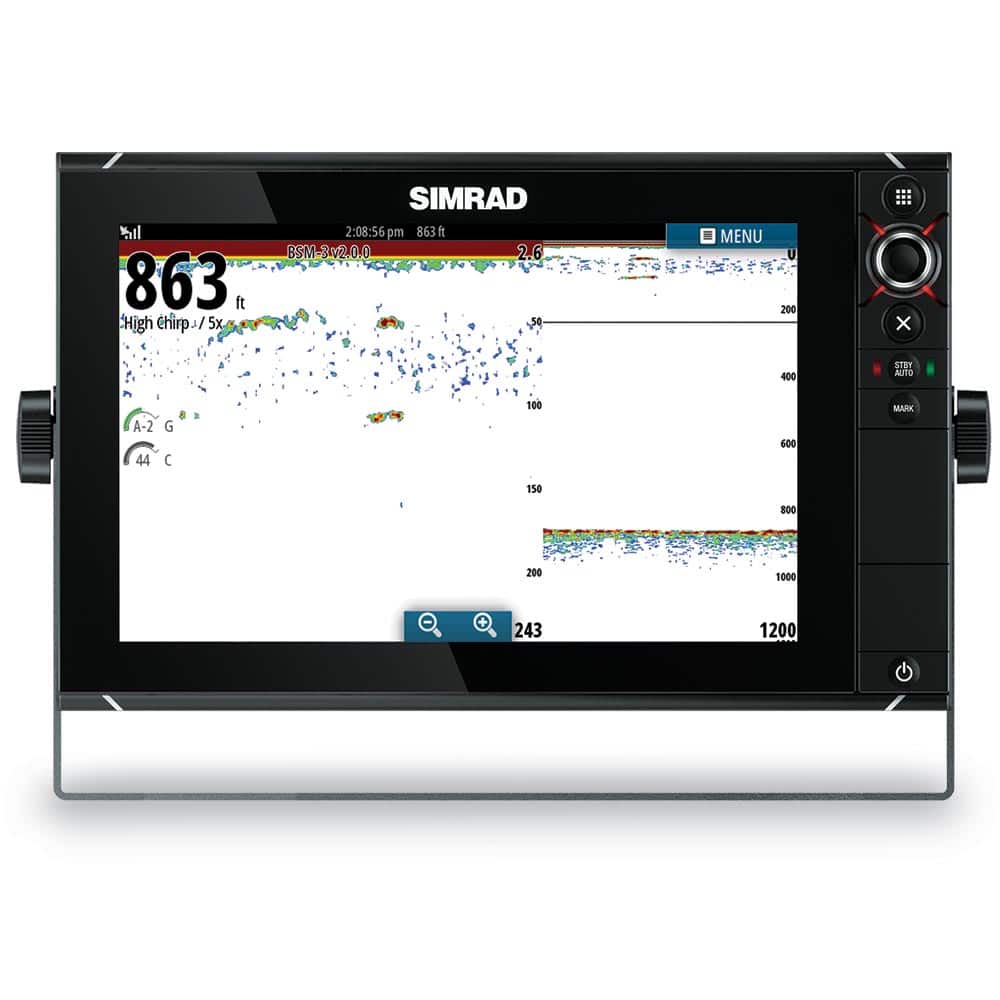
With some of these more economically priced units, anglers might lose the ability to dial in discreet frequencies, but most can display side-by-side views of CHIRP next to down-imaging. With the addition of a side-imaging transducer, most can also show you views to either side of the boat in a third window. Some companies use CHIRP technology within their down- and side-imaging products; some do not.
“If you’re trolling next to a weed line, you could show 2-D CHIRP and CHIRP SideVision at the same time,” McGowan says. “If you don’t have to look left and right, you could just select one side.”
CHIRP truly paints about as complete a picture of your submerged surroundings as possible. Fish no longer have a place to hide.

